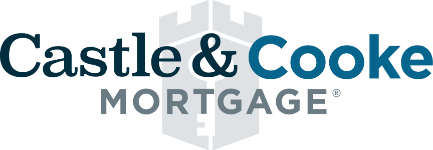
What is bankruptcy?
A bankruptcy is a legal way to escape from overwhelming debt—you can think of it as a financial fresh start. Bankruptcy is based on federal law, so it’s available in all states and territories in the U.S. However, the specifics may vary based on state law.
There are two main kinds of bankruptcy for individuals, known as Chapter 7 and Chapter 13 (referring to the relevant chapters in the federal law).
Chapter 7
Chapter 7 bankruptcies are for liquidation, meaning you will lose all your financial assets and, perhaps, some of your physical possessions. If you file for Chapter 7, the court will assign a trustee to take over your assets and pay your debts. You will be eligible only if your income falls below certain standards, and only some kinds of debt can be written off.
Chapter 13
Chapter 13 bankruptcies are for debt reorganization. Think of them as a fresh start combined with a debt repayment plan. These bankruptcies are usually for people with a steady source of income, and they have a few advantages over Chapter 7 filings. For instance, they may allow you to keep your house as long as you can keep making mortgage payments. They may also protect your cosigners, and more kinds of debts can be written off.
Other chapters
Individuals may also file for bankruptcy under a few other chapters of the law, but only under specific circumstances. Chapter 11 bankruptcies, for example, are usually for corporations but can sometimes be filed by sole proprietors (whose business property is not considered separate from individual property). Chapter 12 bankruptcies are only for family farmers and fishermen, and are also mostly related to business debt.
How does the process work?
The first formal step in bankruptcy is to file documentation known as a petition with the bankruptcy court in your area. Filing fees will be assessed at that time, and you will need to pay them immediately or in a payment plan of 120 days or less. As soon as the paperwork goes through, all the debts you listed will be stayed, meaning debt collection attempts will stop.
Next, in about three weeks but not longer than about two months, you will attend a mandatory meeting with your creditors, meaning the people to whom you owe money. You will be placed under oath, and your creditors will get to ask you questions about your finances. As long as none of your creditors object to your bankruptcy by filing a complaint with the court, you likely won’t need to go before a bankruptcy judge.
If you filed for Chapter 7 bankruptcy, your trustee will take over your finances and pay your creditors the amounts you agreed on. About 60-90 days later, you can expect a formal discharge. That discharge relieves you of the outstanding debts that were part of the bankruptcy, and you’re free to go on with your life.
If you filed for Chapter 13 bankruptcy, things get a little more complicated because you’ll be repaying your debts over three to five years. Your assigned trustee will take over your finances and make sure you follow the plan—he or she may even garnish your wages. Your bankruptcy won’t technically be over until the end of that period, and you won’t be allowed to take on any new debt without the permission of your trustee.
What are the upsides of bankruptcy?
Bankruptcy can feel like the Big Bad Wolf, but it offers some important benefits for people who have fallen on hard times. It can wipe out some kinds of debts, can free you from constant collection calls, can stop wage garnishment, and may allow you to prevent mortgage foreclosure.
Most bankruptcies also require financial counseling and education so you’ll be better prepared to manage your finances in the future.
What are the downsides of bankruptcy?
A fresh financial start can be just what some people need, but bankruptcies have serious costs both now and in the future. First, you’ll have to pay court costs and any additional legal fees you ring up during the process.
Bankruptcies also drop your credit score by around 200 points, and they stay on your credit for 7-10 years. In addition, you will likely lose all your savings, investments, and credit cards, and may be forced to give up private collections, valuables you inherited, and second homes or vehicles.
It’s also important to understand that not all debts go away even if your bankruptcy petition is approved. Debts that likely can’t be forgiven include:
- Federal student loans
- Child support or alimony
- Most kinds of overdue taxes
- Costs incurred by willfully damaging property or driving under the influence
- Debts owed to retirement funds
- Debts for HOA fees
- Any debt not listed in your petition
Finally, be aware that bankruptcy may harm your personal and professional reputation. The record is a public filing, meaning people such as potential landlords and even journalists will have access to it. Potential employers will also be able to see it, though federal law protects you from being discriminated against based on your bankruptcy alone.
How long does bankruptcy last?
For Chapter 7 bankruptcy, most petitions are fully discharged within six to nine months of filing. For Chapter 13 bankruptcies, the process can last up to five years depending on your repayment plan. Both kinds of bankruptcy stay on your credit for up to 10 years.
Public records about your filing, on the other hand, will be searchable on public databases unless the records are sealed by a judge. Unless you take steps to prevent it, consider a bankruptcy part of your permanent record.
Can you get a mortgage after bankruptcy?
Filing bankruptcy is pretty good proof that you’ve had trouble managing your finances, and that makes you a high risk for mortgage lenders. But it doesn’t mean all hope is lost! If you prove that you can be responsible with credit over a long enough time, you could qualify for a mortgage.
For FHA home loans and USDA mortgages, that waiting period is usually three years. For VA loans, you’ll need to wait at least two years. For conventional loans, you will usually need to wait two years from the discharge date of a Chapter 7 bankruptcy or four years from the dismissal or discharge date of a Chapter 13 bankruptcy, and seven years in all other cases.
Even after the waiting period, mortgage lenders will look at your bankruptcy when deciding whether to lend you money for a home. You will likely need to have more money saved as a down payment than you would otherwise, and your interest rates will be much higher.
Bankruptcy alternatives
If you’re feeling overwhelmed by debt, there are a few steps you can take before filing for bankruptcy. You may be able to make repayment plans with your creditors one at a time, consolidate your debts with a new loan, or get help from a licensed credit counseling agency. If you’re being harassed by your creditors, you may be able to stop the harassment even if you can’t pay, depending on the laws in your state.
At Castle & Cooke Mortgage, we are committed to helping families on the road to homeownership. We aren’t credit counselors, but one of our licensed Loan Officers may be able to answer some of your questions and help you access resources you can trust.


